
Mabuse
-
Posts
24 -
Joined
-
Last visited
Content Type
Profiles
Forums
Blogs
Gallery
Events
Store
Posts posted by Mabuse
-
-
Some other bunkers from Braunschweig:
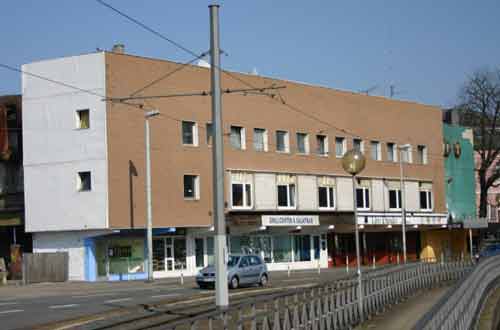
The bunker "Kalenwall" near the old station offered shelter to more than 400 persons. Now it is used as a night club (afore als cinema), a cafe and shops.
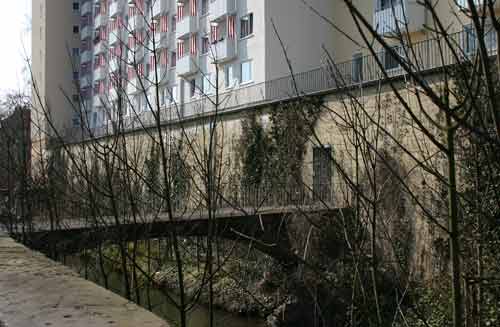
The bunker "Okerstrasse" is now the basement of a block of flats. The former bunker had place for nearly 950 people.
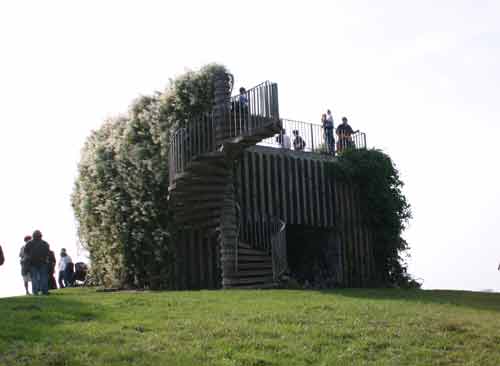
The "Nussbergbunker" was the command post of the civil air-defence. On the picture you can see the observation bunker, the whole bunker installation was much bigger - nearly the whole "Nussberg" was undermined and long tunnels led to the city.


 0
0 -
The city of Braunschweig took heavy damage in WW2 by allied bombers, the biggest bombing raid was in the night of October 14th/15th 1944 (codename "Skate") with more than 1000 bombers.
More than 90% of the historic city were destroyed but only ca. 3.000 persons died 1942-45 because of the bombings. That is because Braunschweig was provided very well with bunkers and "Luftschutzkellern" (= air raid shelters in the basements of blocks of flats). At the Technical University of Braunschweig the "Institut f?r baulichen Luftschutz" founded in 1937, which explored the the protection of concrete, bunkers, etc. - so bunkers were built in Braunschweig very early.
Many bunkers survived the war, the most are nowadays unsed as blocks of flats oder commercial buildings (cinema, discoteque, stores...) and you hardly can recognize the former function. But some can still clearly be recognized as former bunkers. Here are some of them:
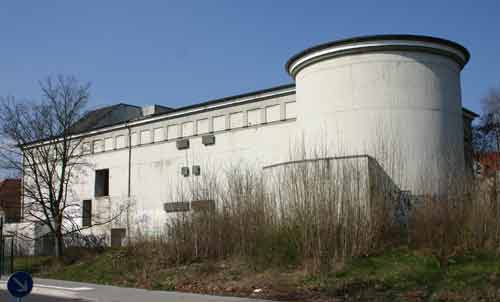
The Bunker "Madamenweg" will be reconstructed als blocks of flats. 1.500 persons found shelter here.

The Bunker "Kaiserstrasse" offered shelter to 640 men, women and children.
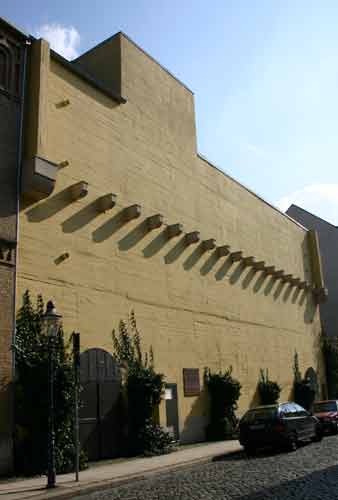
The bunker "Alte Knochenhauerstrasse" was built at the place of the old synagogue, which has been torn down in 1940 after it was burnt down in the "Reichskristallnacht" 9./10. November 1938.
More than 800 Persons found shelter here.

The "OP-Bunker" of the former "Landeskrankenhaus" (state hospital) in the "Celler Strasse". It was the operating-room bunker of the hospital.



 0
0 -
On the same day we walked along the "Westwall-Wanderweg" near Simmerath, were you can find lots of "dragonteeth" called tank traps.
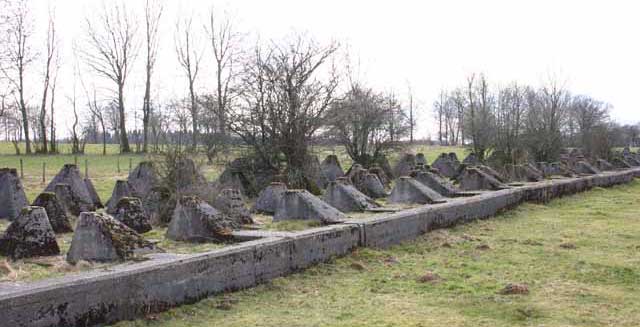
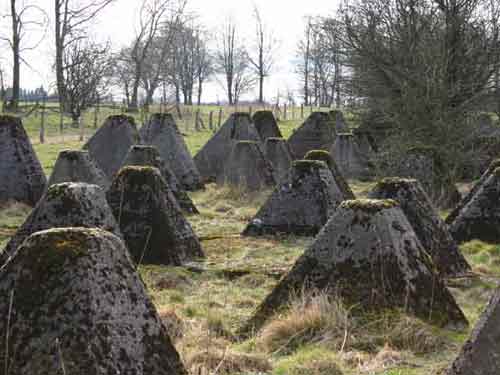

 0
0 -
In February I did a little hiking with two friends in the Huertgenwald south of Aachen. Here are a few pictures of what you can finde there. Unfortunately we only found one bunker in that part of the forest (with my GPS I found two other sites of former bunkers, but only rubble of concrete was left there) and after that walk I coulnd't persuade my friends to look up other parts of the big forest.

The handrail on top is modern, the bunker ist sutuated on a slope down to a road - a tactically wise chosen position
 .
.It was not possible to enter it, the former entrance was blocked by a steel plate and was partially sunk into the ground.
 0
0 -
The Flander's Fields Museum in Ypres is one of the best WW1-exhibitions I ever saw, it's neutral and well researched, it's professionel (not like the dozens of battlefield-museums around Ypres, which are interesting to visit but which are just collections) and very well presented to "amateurs" and professionels.
By the way: The Pickelhaube in post #4 is one of an infantry regiment from Braunschweig. The 92.IR fought 1914 in Roselaire near Ypres. The I. and II. Battaillon of the 92. Infanterieregiment wore the jumping horse until 1912, so it might be an older helmet which was still worn in 1914/15. Actually these two batallions wore at that time - like the III. (or Leibbataillon)/92. IR - the famous death's head (see my avatar) instead of the horse on the Pickelhaube's eagle.
Greetings from the lion's town,
Daniel
0 -
I like the address; North Wales, England
 .
.You probably know, for many Germans "England" and "Britain" are synonyms - that's why not so well educated german tourists sometimes have problems with the local people in Scotland and Wales
 .
.I found this interesting form, demonstrating the bureaucracy behind the POW-camps, between my grandpa's sheets of music. It's back was used as scribbling paper and it was much luck I found it:

 0
0 -
Post 1/4:
Verliehene Auszeichnungen:
14.7.42 "Winterschlacht im Osten 1941/42"
(Ostmedaille)
Verliehen durch Batl. Befehl Nr. 110 p. 14.7.42
des Br?. Bau Batl. (Ing) 210 [= Br?cken Bau Bataillon -> Bridge Building Battallion]
Post 3:
Verspr. Sam. Stelle 344 ID [ = Versprengten Sammelstelle -> Dispersed Soldiers Collecting Point]
Post 6:
1. umge?ndert von Soldat in Pionier 3./II. 41 2./Br?ckenbaubataillon 310 [changed from "Soldier" to "Engineer"]
2. Laut Komp. Befehl d. 6.11.41 zum Gefreiten bef?rdert 20.XI.41 2./Br?ckenbaubataillon 310 [Promoted by Company's order to "Gefreiter"]
3. Batl. Befehl 243 d. 24.12.1942 zum Obergefreiten 28.12.42 [by battallions order to "Obergefreiter"]
4. Bef?rderung 1.12.44 Bnislo(?) B 671 [Promotion]
Post 7 (unknown page 2): is about changed Equipment
schwarz = Zugang [black = addition]
rot = Abgang [red = withdrawal]
1 gek. lis.(?) Portion [deleted and replaced by:] eingezogen erhalten 436144 Gefr. Hle(?) [1 cut ??? portion (replaced by "withdrawn") received...]
Post 8 -> see Hankmeister
Post 9 -> see Hankmeister
24.10.43 Simferopol
5.1.44 k.v. [kriegsverwendungsf?hig] nach Url. v. 5,- 20.1.44 zu ???. Truppe [fit for war service, after holiday back to his unit]
hope this helped...
Ciao,
Daniel
0 -
Braunschweig is the city were I learned how to speak German. I wonder why I never saw any Soviet orders for sale on Bohlweg.

Cool, the world is a village
 !
! Have you ever been on the flea markets "Hamburger Stra?e/Sch?tzenplatz" oder "Harz & Heide Messegel?nde"? During the early 90s it was a good place to find soviet militaria.
The Serials:
Order of the Red Banner: 360686
Order of the Red Banner of Work: 746067
Order of Glory (3rd class): 555246
Medal "For Bravery": 635976
Medal "For Combat Service": 2778797
Order of the Great Patriotic War (2nd class): 1809676
Order of the Great Patriotic War (1st class): 1102458
Order of the Red Star: 1034809
You see, very late orders...
0 -
...I suppose collecting is not the worst addiction - but maybe one of the more expensive...
The medals prices in Russia ten years ago (>10 years, last time I was in Kazan was in 1995) were fairly cheap - I fear that might have changed...
 ...particulary with regard to the missing orders/medals (e.g. the Order of Victory
...particulary with regard to the missing orders/medals (e.g. the Order of Victory  )
)Ciao,
Daniel
0 -
...and the rest...
The Orders of the great patriotic war are - unfortunately - from the Breshnev-era, with very high numbers and made from one piece.
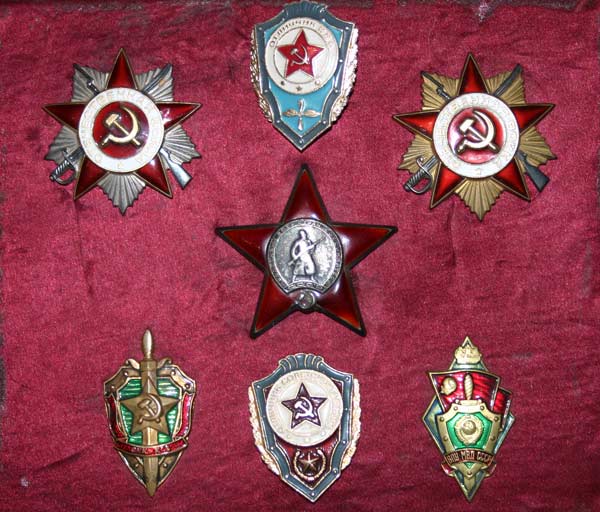
 0
0 -
Hello! This is, what I collected on local flea markets and on my journeys to Kazan/Wolga, years ago. It's ten years ago, I bought my last medal... sigh...

 0
0 -
It's a Peninsula Centenarmedaille (like the one of "Ramblinfarms" - a commemorative Medal for 100 years after the foundation of the "black band"/"die schwarze Schar" by the "black duke" Friedrich Wilhelm) and in a quite bad condition, but the story behind it maybe interesting.
I found it as a young boy in the early 80s during a school-sport's event in the Eintrachtstadion (The stadium of Braunschweigs biggest sports club, which soccer-team won the german championship in 1967) on the sandy stands of the southern corner (which was renovated a few years later and isn't now sandy at all).
How did it get there? A mystery...
Though it is in worst condition and my team lost that day, it's now a kind of talisman
 .
.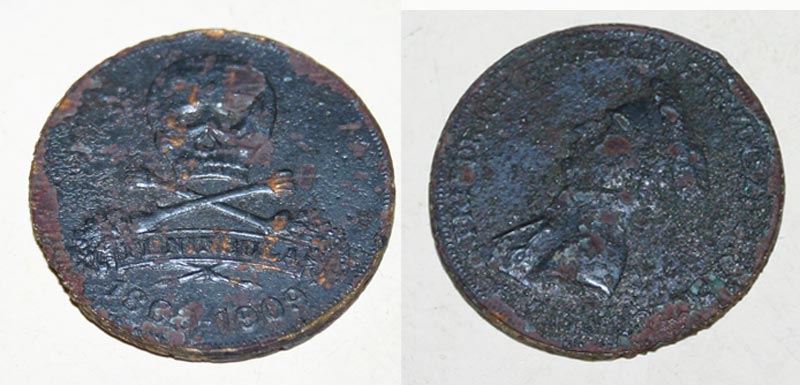
 0
0


Time to post Braunschweig!
in Germany: Imperial: The Orders, Decorations and Medals of The Imperial German States
Posted
The eight recipients are known:
1. Sergeant Eggeling from the Hussards Regiment, "who was the first to attack the enemy, being an exmple under fire for every cavalryman. He brilliantly stood out in the attacks on the french cavalry on June 18."
2. Lancer Lindemann. "He stroke down the commander of the French cuirassiers several times in front of his regiment and was hit by a bullet in doing so."
3. Bombardier Büchner. "He stood at the second howitzer, and was not only doing his duty but distinguished himself when the battery was attacked by hostile cuirassiers for the first time and Captain Orges got between two of the enemies. He wounded one of them with his sabre, so that he fell from his horse."
4. Soldier Heilemann of the Leibbataillon (Guards Battalion). "He was always the first voluntary on the advance, was all the time on the battlefield, though he was wounded at his head, and fought during the whole battle."
5. Sergeant Fischer of the first Light Battalion. "This brave man distinguished himself on June 16 and 18, especially with his bravery while skirmishing."
6. Feldwebel Kinkel from the first Line Battalion. "He recieved a major wound in the face on June 16 and was struck by a bullet in the left leg on June 18, but didn't leave his company."
7. Sergeant Fuhr from the second Line Battalion. "He carried his unit's colours and shouted when he was heavily wounded several times: 'Take anyone the colours so that it won't fall into the hands of the enemy.'"
8. Sergeant Mueller from the third Line Battalion. "This brave man asked for permission to step in front of the square during a hostile cavalry attack, and shot down two french officers at this opportunity."
The source of this informations is:
"Braunschweigisches Gedenkbuch zur fünfundzwanzigjährigen Feier der Schlachten von Quatrebras und Waterloo", Braunschweig 1840
The (very loose and bad) translation of the statements was done by me...:blush: